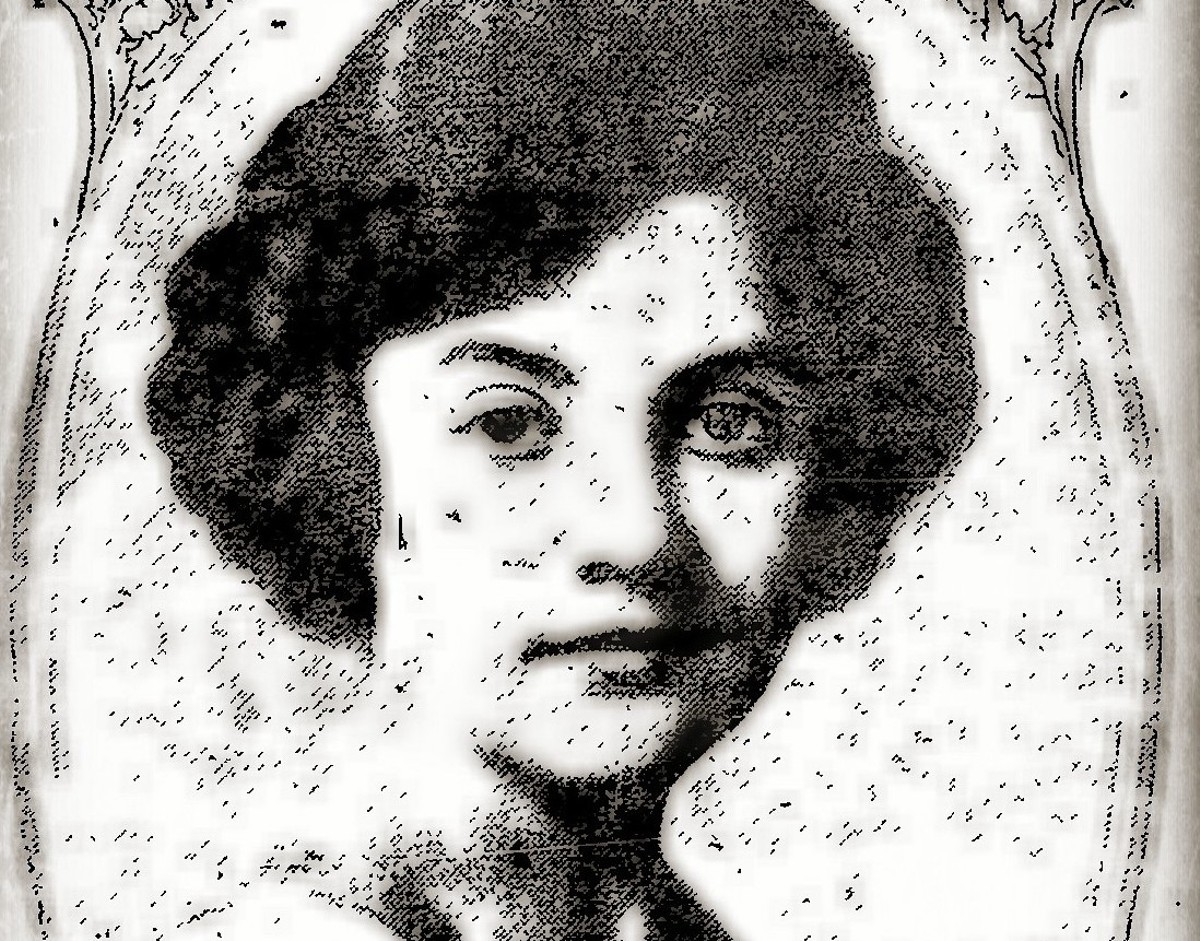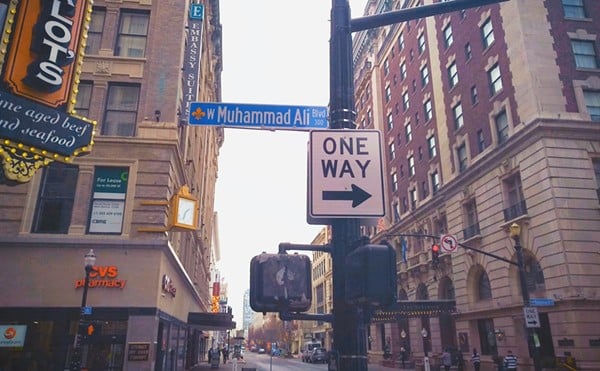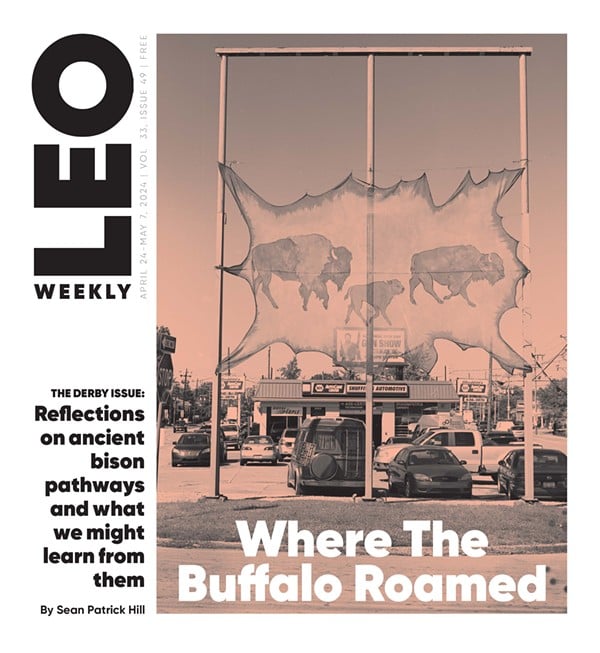The story below is chapter 14 from a book of forgotten stories. As we talk about the holiday of love, we should remember that love isn’t always sweet and sometimes, it’s even sinister. The book, “Stories of the Forgotten: Infamous, Famous & Unremembered” is written by J’aime Rubio and reprinted here with the written permission of the author. (CreateSpace, 272 pgs., $15.99)
It was Christmas Eve, 1919, in Louisville, Kentucky. A young nurse by the name of Elizabeth F. Griffith was ecstatic. Her wedding was just days away, and she was about to become a new bride. Little did she know that this day would prove to be her last.
The story surrounding the death of Elizabeth Griffith is one shrouded in a complex web of mysterious unanswered questions, scandalous behavior and lies. It appeared that during my investigation into this case, every time it seemed as though I had found answers, I stumbled upon even more questions and clues. After countless hours of researching every avenue I could find, I felt it necessary to bring back Elizabeth’s story from the dark abyss of forgotten ones, and shed light onto this ever perplexing mystery.
Elizabeth Griffith was born on May 13, 1902, to parents Martha McLean and John Griffith of Louisville, Kentucky. At the time of her death, seventeen-year-old Elizabeth was working as an office assistant to a very prominent doctor in town, Christopher G. Schott. After her death, the newspapers brought up the fact that Elizabeth and Schott had briefly been engaged to be married, however the engagement was soon called off.
Stories seem to differ on just who ended the relationship, although Elizabeth continued working for Schott at his office, so it seemed to the unsuspecting eye that the break up was amicable. As time went on, Elizabeth started seeing another male suitor, George Jordan, an Army Captain who was stationed at Fort Zachary Taylor, in Key West, Florida. The two hit it off, and eventually the pair were engaged to be married on Christmas Day.
Unfortunately, due to changes in his military responsibilities, Captain Jordan had to postpone the wedding by a few days. Jordan chose to travel all the way to Louisville to see Elizabeth to break the news to her in person. According to his statements, she was happy and excited about the upcoming nuptials and seemed to be alright with the wedding date change to New Year’s Day. When he left her to go back to Fort Zachary Taylor, she was alive and well. Knowing the wedding was now a week away, Elizabeth continued on with her day as usual and went to work at the Dr. Schott’s office. It wasn’t until after 3:30 p.m. on that day, Dec. 24, when everything changed.
It was around that time that Elizabeth’s body was discovered in a locked back room of Dr. Schott’s office with a bullet through the heart. The gun, a .45 caliber revolver belonging to Dr. Schott, was found next to her body. It was ascertained that she had been shot from above in a downward trajectory, having been on her knees at the time of her death. In the middle of possibly pleading for her life, she took one bullet to the chest. The person who allegedly found Elizabeth’s body was none other than Dr. Schott himself, who was then accompanied by his thirteen-year-old neighbor, Laurene Gardner. Schott claimed that he and his little companion, Laurene came to the office after driving around town for several hours, delivering Christmas gifts. After returning to the office he noticed the back room door was locked. Using his own key, he unlocked the door and found Elizabeth’s body in a pool of blood. Schott told the police that he was certain that Elizabeth had committed suicide.
Detectives investigating found no evidence of suicide, but instead believed that the lack of powder burns on her body, clothes or hands proved that she was murdered. They also discovered a newspaper clipping in her pocket, which led to even more questions.
The piece of paper had a headline that read: “Paying the Debt in Full”—with a lead pencil underlined sentence, “Who was it that took the pains to tell your husband about the one awful mistake you made in your life?” Even more perplexing was the handwritten words on the margin of the clipping that read, “The man who persuaded you to make it.”
This clue left detectives scratching their heads, but certain that it had something to do with Elizabeth’s murder. With this in mind, the police did not hesitate to arrest Dr. Schott for the murder of the young lady and held him on $15,000 bail until arraignment. When questioned, Dr. Schott claimed that he was innocent, but didn’t make himself look too good with his admission of his odd relationship with the deceased. The Chicago Tribune dated December 26, 1919 quoted Dr. Schott when he was questioned about his relationship with Elizabeth, saying:
“The eternal triangle…It was just like many other love affairs. We had been good pals for more than a year and I am confident she loved me. Once, in my office, she saturated a cloth with chloroform and was found in a semi-stupor.”
In other words, besides mentioning there was some sort of “eternal” love triangle, he was also attempting to sully her reputation by claiming that Elizabeth was getting high on the doctor’s supplies. Interestingly though, Dr. Schott offered more information with that one statement than he would realize. This will be discussed later on in this chapter. According to his statement, Dr. Schott claimed he was happy for Elizabeth’s upcoming marriage and that he felt it would be a good “trial run” for the marriage he believed would take place in the future between the two of them. It was apparent that although he made remarks that Elizabeth was obsessed with him, it was clearly the opposite. Friends of Elizabeth said that she had ended the engagement with the doctor claiming she was actually afraid of him, and that she was too afraid to quit her job, at least until she was married.
Investigating the dynamic of Schott and Elizabeth’s past relationship reveals much more. One of Elizabeth’s friends, Anna Boswell, did not like the doctor one bit, due to his bad reputation. This caused the two friends to avoid conversation about Elizabeth’s relationship with the doctor. Nurse Cohan, another close friend of Elizabeth, was quoted in the newspapers. She recalled one night when she, Elizabeth, Dr. Lee Botts and another young gentleman were out for dinner and a show.
“We walked out First Street from Chestnut Street. At the drug store at First Street and Broadway, Dr. Botts went in and ordered a taxicab. The taxi arrived soon after and we all got in. Just before we started away though, a man stepped up to the side of the cab and peered in the window. Elizabeth exclaimed: “Yes, It’s me, George. It’s Elizabeth.”
It was later explained to the group that “George” was a man that Dr. Schott had hired to shadow her everywhere. It seemed that the doctor had serious insecurities and trust issues, and this caused Elizabeth not only to resent him, but to fear him for his out of control jealous nature. Could the good ole’ doctor have hired George to commit the dastardly deed, murdering poor Elizabeth?
During the inquest, some of Elizabeth’s letters to Dr. Schott were read to the jury. One was dated in May of 1919, while Elizabeth was in nursing school at the city hospital. It read:
“Did you ever stop to think that the time would come when I didn’t want to come back? You seem to think you can have me or leave me at will. I’ll admit that I waited, hoped and prayed during my first three months that you would come back to me, but now it could not be if you wished it. Your unjust suspicions today settle the question forever. Didn’t you tell me that you had a different girl every night, and when I merely go downtown to supper you say that everything is not on the level? Had I never gone with any one and let you do all the going, you would have found some other excuse. They are nothing new.
I have been fed up on excuses and promises for the past three years and let me relieve you of responsibility of making more, for I have forgotten the place where I do not even want to return. It doesn’t matter to me if you come or go. It’s hell to feel that way, and I never thought I could feel any other emotion but love for you. Don’t ever think of me personally again, as I have already schooled myself to an impersonal feeling for you. I want to keep on fixing your books and I want some money, in fact, need it. I don’t mean to borrow it, as I feel that I am earning a little bit working on the books. It doesn’t matter how deficient I was, it will be hard to find another girl to help you as I did and be as true as I was, considering everything, and I realize, too. You just want to get something on me so you can go around and talk about me as you did Jennie Cole, and I have been good to you, too, but I see that it is all you are after. If that is gratitude and appreciation, well.”- “Elizabeth Griffith.”
By his own admission, Dr. Schott claimed that during his time engaged to Elizabeth, he hired a private detective to shadow her wherever she went, out of fear that she would be unfaithful. During the time he was being held, Dr. Schott remained somewhat arrogant in his stance. He even went on record for the newspapers intimating that he expected to be released immediately and “to be calling on patients again” by New Year’s Eve. “They have not even proved Miss Griffith was murdered,” Schott told the press.
The Richmond Times Dispatch offered a full page spread on their take of the story. This included information that clearly pointed to the doctor as the best possible suspect and the theory of how it took place.
“More probable that this is the theory that Elizabeth Griffith– a high-spirited, courageous girl, as all her friends say– snatched the weapon from the doctor’s table and wielded it first herself in an effort to force her tormentor to cease the threats to go to her sweetheart with the stories of her past. A struggle followed and the weapon was wrested from Elizabeth’s hands. She fell to her knees to plead for mercy, but her prayers went unheeded, for a mad rage at this unexpected show of resistance nerved the hand that now held the automatic. The trigger was pressed, the muzzle spat fire and the ill-fated little bride-to-be was suddenly transformed into a ghastly bleeding corpse.”—- Richmond Times Dispatch.
During the inquest, witnesses came out of the woodwork favoring both sides. Some claimed they saw the doctor coming to the office around the same time he claimed to have found her body. Another person, a patient of Dr. Schott, Mrs. Paul Stone claimed that she called the office about an hour before Elizabeth’s alleged time of death, claiming that Elizabeth was depressed and had mentioned she didn’t have anything to live for. She stated that Elizabeth told her that the wedding was postponed because her fiancé’s mother was out of town visiting his sister and he refused to be married without his family present.
During an era when a sense of propriety was expected from everyone, it seems very unlikely that Ms. Griffith would have expressed her emotional state to a patient over the phone in a casual conversation. Not only would it be unlikely, but unprofessional for that time period. The only thing I could imagine was perhaps Dr. Schott had leverage on certain “witnesses” in his defense, and possibly threatened exposure of personal secrets had they not gone along with his story. After all, most people disclose personal information to their doctor that normally they would never share with others, and in a pinch the doctor could have easily blackmailed certain people to help aid in his alibi or defense.
It seemed that the doctor was shady, hiring men to shadow Elizabeth, and from her own letters to the doctor she mentions that he was trying to “get something” on her, in order to ruin her reputation. The newspaper clipping found in her pocket eluded to that very thing. But what was it that Dr. Schott knew about her that no one else did? And was that information something the doctor held over her head and threatened to take to her new husband-to-be?
When it came down to questioning all the eye-witnesses in the case, not all stories matched up. William J. Ryan, a local baseball umpire, claimed that he saw the doctor leaving his office around 3:30 p.m. This was the opposite of what Schott had previously stated. He claimed his arrival was around that time, which would put him at the scene of the crime at the time of Elizabeth’s murder. Whether Schott was there or not, he could have easily made that alibi, knowing all too well that he had hired someone to do the job for him.
Even more strange was the fact that an anonymous writer sent a letter to Dr. Schott’s attorney’s threatening to kill Mr. Ryan for his testimony against the doctor. The letter which was also published in the newspapers claimed that Ryan “needed killing,” and that he was only going to cause the doctor more problems. The letter was signed simply as “A Friend.”
Elizabeth’s sister, Kate Griffith was quoted in the newspapers explaining that she had called the office around the time that coroner’s claim Elizabeth had died, and that Dr. Schott had answered the phone at his office. She also was very insistent that Dr. Schott had some sort of hold over her sister and she was unsure why. With all these conflicting statements, it seemed the doctor’s story wasn’t adding up that well. He did have one trick up his sleeve. That was his little companion, thirteen-year-old Laurene Gardner. Her testimony at the grand jury hearing gave him an alibi. I found it quite interesting that at the very same time the detectives were searching for more witnesses to question in regards to the case, a discomforting headline pops up connected to the story, “Girl Takes Life To Escape Going To Witness Stand.” Could that actually be? Was there another girl, dead?
The Appleton Daily Post, for January 9, 1920, stated that a young lady by the name of Theodosia Saunders was found dead in her house. It was suspected that she took her life to avoid speaking to detectives or to Dr. Schott’s attorneys about her possible knowledge of Elizabeth’s death. I tracked down several newspaper articles mentioning this tragic turn of events, all of which seem to be conflicting. Although some state that Miss Saunders killed herself to avoid being named a witness, others claim it was accidental, and that she had been ill with tonsillitis and was self-medicating. According to the papers, her personal doctor came by earlier in the day to check on her and left his medical bag there by mistake. Later on, Theodosia’s mother found her body with a handful of chloroform soaked cotton. It was apparent that she had died from inhaling the toxic fumes.
Theodosia’s death certificate states it was accidental overdose of chloroform poisoning. It is quite odd that she died the very same way in which Dr. Schott claimed he had once found Elizabeth in his office, as I previously mentioned. Another thing I found strange about Schott’s statement was the fact he even mentioned the chloroform at all. Was that a slip up by the doctor? Did Theodosia really accidentally overdose on the chloroform? Or was her death just as questionable as the way Elizabeth died?
This story seemed to take me even further down the rabbit hole with a sense of uneasiness along the way. How did Theodosia fit into the story? What did she know that perhaps cost her life? Why did Dr. Schott, a middle-aged man, choose to take a thirteen year old girl with him to deliver Christmas gifts alone? And how did Elizabeth end up in a locked room in the doctor’s office, to which only he had the key?
There were even more questions. What was the cryptic newspaper clipping found in Elizabeth’s pocket all about? Was that sent to her anonymously by an ex-lover? Or perhaps a jealous woman who had affections for one of Elizabeth’s male suitors? I found myself theorizing so many possible scenarios in both Elizabeth and Theodosia’s deaths.
Records indicate that Dr. Schott had been released from police custody a few days prior to Theodosia’s death, and newspapers relay that Dr. Schott did stop by Theodosia’s home to give her parents his condolences, so he obviously knew where she lived. Was he that desperate to have been involved in her death, too? Or did her death have nothing to do with Elizabeth’s death, and was just merely coincidental?
After all the incriminating evidence and suspicious circumstantial evidence against the doctor, ultimately the grand jury accepted the alibi given to them by the little girl, Laurene Gardner. After dismissing all murder charges against the doctor, Elizabeth’s death slowly to faded in the papers, and over time became forgotten.
Her friends and family could find no reason that Elizabeth would have killed herself. Her wedding was days away and her new life was in clear view. By newspaper accounts prior to her death, it shows Elizabeth’s personality to be adventurous, spirited and fearless. She was mentioned five months before her death as being a volunteer passenger on an JN-4 airplane that was delivering newspapers to Shelbyville, Lexington and Frankfort. The pilot admitted that she asked him to perform stunts such as tailspins, flip-flops, nose dives and barrelrolls. She seemed to be full of surprises and open to exciting new things. To imagine that someone as spirited as she was would end her life when she was fully capable of making any choice she wanted, just doesn’t add up.
It was so clear that she had been murdered, even the newspapers expressed their opinion of it; yet, it seemed that Dr. Schott was out of the reach of the law. How did he manage to get away with it? Dr. Schott owned nine properties in town and the Gardner family rented one of those properties. In fact, they lived just next door to the doctor. As I had mentioned before, perhaps Schott threatened his “witnesses” to help provide an alibi for himself. Something as serious as threatening to throw them out on the street could have been used as leverage to persuade the young girl to lie to the grand jury, giving him a solid alibi. Of course, that’s just speculation. Again, he could have very well been with Laurene as he stated, all the while a hired gun could have been waiting for Elizabeth in the office.
And where does Theodosia fit into this story? Did she know something crucial to the case and thus she needed to be silenced, for fear that the truth could come out? Or was her death just a coincidence? It seemed so unfair to think that if Dr. Schott was responsible for ending these two young women’s lives, how was he was able to get away with it?
Fast forward to April 16, 1928. We find that Dr. Schott now has his own sanitarium for the treatment of opium and morphine addiction in Louisville, at the same location where Elizabeth’s heinous death had taken place only nine years earlier. Schott is much older now, a heavy drinker and a tyrant of an employer. Abusive to both patients and employees, even making inappropriate sexual comments towards women in public. It seemed the doctor’s true colors came out eventually with time and carelessness. After verbally abusing the cook for misplacing a key, one of the male nurses on staff, Dan Newman, approached Dr. Schott and stood up to him, making it clear that his abuse toward his employees would not be tolerated. This did not sit well with the doctor and it immediately created tension between the two men.
This continued for several weeks. According to the Brooklyn Daily Eagle, dated April 17, 1928, after watching Dr. Schott bring in an unidentified woman, who was not a patient to the sanitarium, abusively dragging her across the floor and screaming to his employees to “put her to bed,” Newman had enough. After some heated words were exchanged between the two, Newman felt his life was in danger, so he went to his room and retrieved his pistol to keep in his pocket for his own safety.
According to testimony by Newman, a drunk Dr. Schott had previously bragged that he had gotten away with killing Elizabeth Griffith many years ago, as well as knocking off a fellow physician, too. Perhaps after realizing he had once shared too much information with Newman, Schott felt that his livelihood was now threatened. When the two met again that evening, their argument started again. When Newman witnessed the doctor reaching into his own coat for what he believed was a weapon, the nurse was quick on the draw, pulling his own pistol out and shooting the doctor down, dead. After the deed was done, Newman called the police and confessed to the events that had taken place. A jury freed Dan Newman on June 14, 1928, dismissing the murder charge and citing that he had acted in self defense. One can only imagine that perhaps some of the jury members from the community, who remembered Elizabeth Griffith’s case, may have been relieved that justice had in a round-about way been served. After all, it was better late than never.
According to Robert Mitchell, Find-a-grave contributor and avid historical researcher, it was discovered that both Dr. Schott and Elizabeth are interred just a few feet from one another at Cave Hill Cemetery, in Louisville, Kentucky. It appears that Elizabeth was buried somewhere in the cemetery in December of 1919, but that she was later moved to her current plot in March of 1920. The burial documents are in the name of Mattie Griffith, Elizabeth’s mother. Why or how Schott convinced Mattie to allow him a spot next to her daughter, the very man that so many were convinced caused her death is yet just another aspect to this unanswered mystery. Sadly, it appears that even in death Elizabeth could not seem to escape the grasp of Dr. Schott.”-----
Copyright October 17, 2016. All rights reserved.






